| |||||||
| Search Forums |
| Advanced Search |
| Go to Page... |
 |
| Search this Thread |  2,348,365 views |
| | #1 |
| Team-BHP Support  Join Date: Oct 2005 Location: Hyderabad
Posts: 5,919
Thanked: 2,652 Times
| Review: 2nd-gen Hyundai Verna (2011) The Hyundai Verna has been launched in India at a price of 7.03 - 10.64 lakhs (ex-Delhi). What you'll like: • A great looking Hyundai sedan • Well-packaged; sufficient room front & back • Competent 1.6L powerplants, especially torquey diesel. Wide range of engines & transmissions on offer • Ride quality & behaviour in the city • Several segment-first features (reversing camera, keyless entry & go, electric folding mirrors and more) • Top notch safety equipment including 6 airbags, ABS + EBD, all wheel disc brakes etc. What you won't: • Dynamics & high speed handling capability. Softly tuned suspension • High speed ride quality isn't flat. Suspension, especially on uneven roads, gets wallowy • 4 speed Automatic gearboxes. This segment calls for a 5 speed • Under-thigh support of the low rear seat not as good as that of competition The 2015 Facelift: • Link to Review 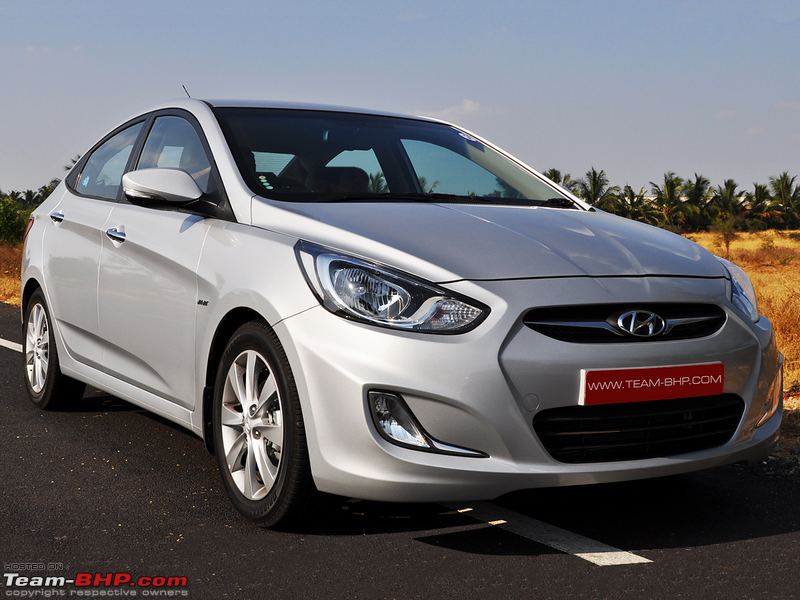 Last edited by GTO : 18th February 2015 at 14:10. Reason: Added the price line on the top. |
| |  (41)
Thanks (41)
Thanks
 |
| The following 41 BHPians Thank Zappo for this useful post: | abk, ajaynaphade, amitby, ARG, arunphilip, auto-one, AutoIndian, bilalsyed, Digital Vampire, DONZ, download2live, ExtremeTorque, Fordmanchau, Fornax, indivic, mandheers, Maverick_x1, Max, mezereo, nairrk, naveen_chandra, nik_kapur, pawan_pullarwar, ph03n!x, Prabhu, RSR, S2!!!, Safari_Beast, shatrughna, sidindica, sith_lord, SmartCat, somjith_nair, superbhikari, swiftnfurious, tjacob, uday.ere, vinu99@gmail.co, Voodooblaster, xPK, _raVan_ |
| |
| | #2 |
| Team-BHP Support  Join Date: Oct 2005 Location: Hyderabad
Posts: 5,919
Thanked: 2,652 Times
| re: Review: 2nd-gen Hyundai Verna (2011) 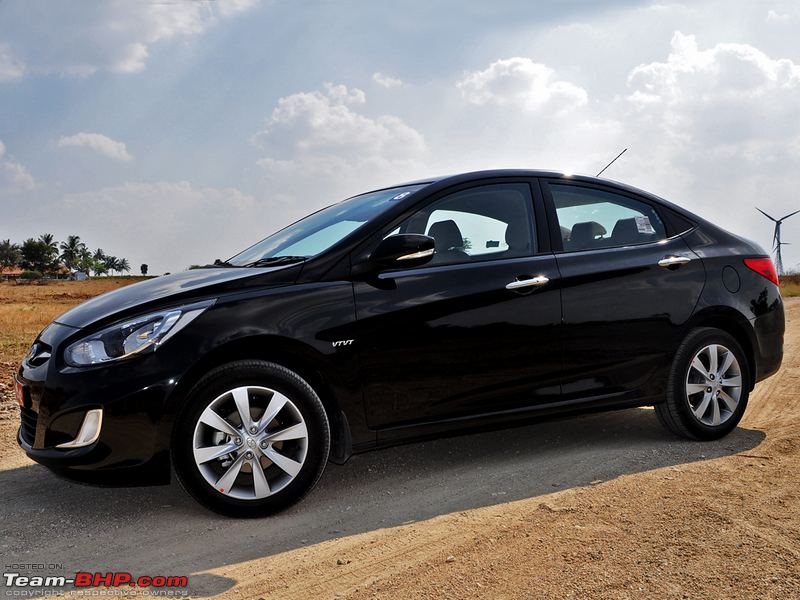 The car you see here is the 4th generation Hyundai Accent, rebadged for India as the new Hyundai Verna. The outgoing Verna is the 3rd generation Accent, while the 2nd gen (original Hyundai Accent in India) will continue to be sold as an entry-level sedan. If you find this confusing, click here to view the different Accent generations, along with their years of manufacture. The Verna is especially important to Hyundai, as it's their most expensive, successful sedan in India (the Elantra & Sonata have so far been market duds). The C segment (sedan) has seen a flurry of activity over the last 2 quarters. The Honda City faced stiff challenge - for the first time in a decade - from the VW Vento and the Maruti SX4 diesel. Thanks in no small part to Hyundai's wide service network and the 1.5L diesel, the Verna still managed an average of 1,500 monthly sales over the last 6 months (varying between 1,200 - 1,900 sales per month). The outgoing Verna's bland design got it a lot of criticism, while the weird facelift (i.e. the Transform) made matters even worse. All of that changes with the next Verna. Hyundai's new range of designs is no more ugly; in fact, most of them are rather good-looking! From the i20 hatchback to the i45 Sonata, everyone agrees that quirky, disproportionate Hyundai's are a thing of the past. The new Fluidic Verna borrows the 'fluidic sculpture' theme for its flowing design. This is the new language of design at Hyundai that the newer models coming out of their factories will showcase. The swoop-down bonnet with a rising waist line gives the new Verna quite a personality, the sharp headlamps included. The large front bumper houses a pair of fantastic L-shaped fog lamps as well as the radiator grille. Even the rear looks pretty good, while some comment on a vague resemblance to the Merc C Class. Though the car seems to have a high waist line, particularly when seen from the side profile, my apprehensions about reversing this sedan proved unfounded. The glass area at the back definitely helps, as does the built-in reverse guide system (more on that later) and big side mirrors. Whatever way you look at the Verna, it's a great looking sedan and amongst Hyundai's best designs. Period. While the car feels overall well put together with high quality paint & good finish, I noticed some large gaps between the panels and on the shut-lines. It looks like a malady which many a manufacturer nowadays is embracing with wide arms! I fail to understand why it should be so difficult to ensure that the gaps are narrower. If you look at the accompanying pictures, at places I managed to insert a double folded, 8-10 pages (thick art paper) handout through these gaps. Such gaps are visible between many of the external panels and hopefully, should be sorted out on the final production versions. Note: As we stated, the noted panel gaps (pics below) were most probably a case of bigger tolerances allowed in the pre production versions. As members have confirmed since launch of the car, these panel gaps have been sorted out by Hyundai in the production versions.  The Verna will now offer a wide range of engine & transmission options. In a C segment first, there are four different powerplants and three gearboxes on offer. The topmost variants will come loaded with many segment-first features. Below is the pricing comparison of the Verna with its competitors.  Neat front end. Hyundai family resemblance is obvious:    16 inch alloys nicely fill up the wheel wells:  A unique colour option:  Rear-end stance looks clean and planted. Much like some European cars:  Thick crease swoops down the side; also notice sensor on door handle to open:  At dusk, with the lamps on:  Shod with 16” 8 spoke alloys & 195 / 55 Bridgestone tyres. The lower variants will sport 15” wheels: 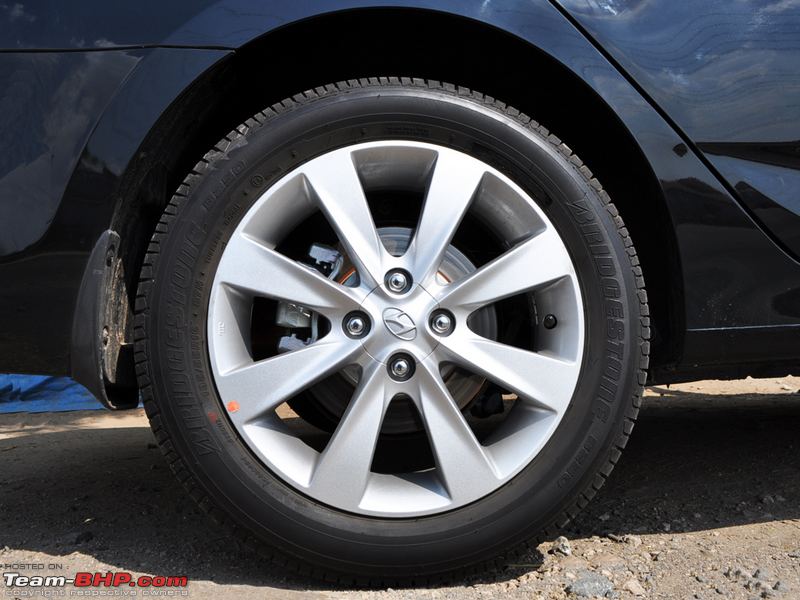 The side mirrors wear integrated repeaters (indicators). ORVMs have fully electric adjustment & folding action: 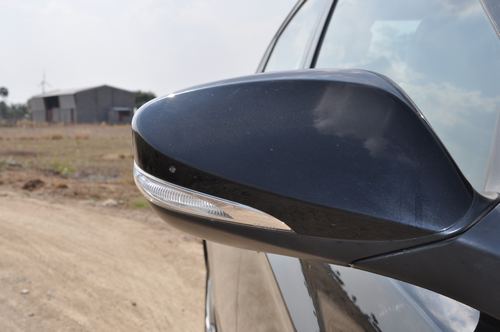 The chrome tipped, dual exhaust pipes bring character: 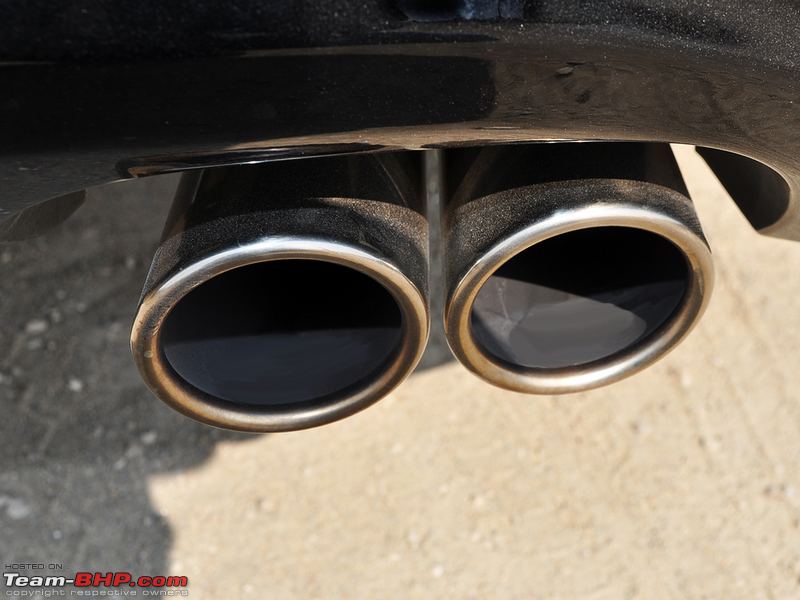 Plastic panel looks cheap:  Notice the panel gaps: 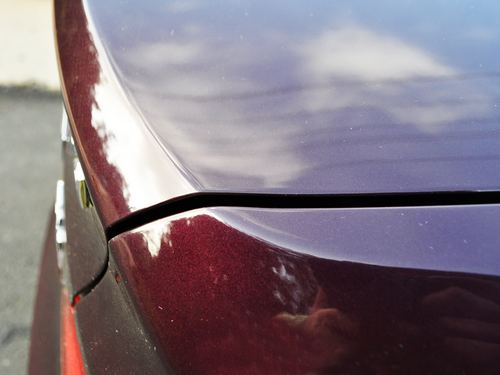 That’s a double-folded 8-10 page handout sitting in between:  Contrasting shades side by side:  Unique rectangular washer: 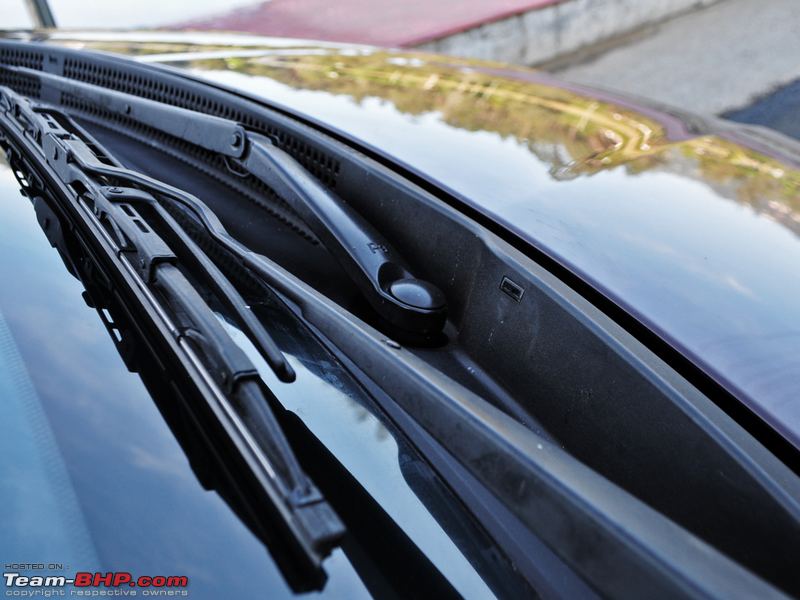 Last edited by Zappo : 21st June 2011 at 14:58. |
| |  (20)
Thanks (20)
Thanks
 |
| The following 20 BHPians Thank Zappo for this useful post: | aa_asif, abhilash_iv, ajaynaphade, amitby, anu21v, Apple, AutoIndian, ExtremeTorque, guyfrmblr, jessie007, Max, mezereo, nairrk, naveen_chandra, ph03n!x, S2!!!, Safari_Beast, somjith_nair, xPK, _raVan_ |
| | #3 |
| Team-BHP Support  Join Date: Oct 2005 Location: Hyderabad
Posts: 5,919
Thanked: 2,652 Times
| Interiors and Features  The Verna is equipped with a smart key on the top variants. Translated, as long as the key is in your pocket, you can simply press the engine start / stop button and drive off. No need for the remote to gain access to the car or the boot either. Simply press on the door handle sensor (as long as the smart key is in range) and the car will unlock. Of course, the lower variants only get a regular, foldable key fob. The ambience is light & upbeat inside the car. The top variants wear perforated, light cream (not exactly beige) leather seats. Even the door trims sport leather! Lower variants will get similar looking, but fabric seat covers. The top of the dashboard is made up of high quality, rubberized plastic that almost acts like an anti-skid surface. Things placed on this surface, well...they stay placed. The surface feels great to the touch as well. The meter console is well spaced out and easy to read. The onboard computer throws up myriad data like distance to empty, average fuel efficiency, instantaneous FE, external temperature, eco mode status and the usual warnings (keys not inside the car, press clutch to start, doors ajar etc.). Like the i10 & the i20, the Verna MID now gets a gearshift recommendation tool. Clearly tuned for economy, the MID displays the ideal gear - in real time - that you should engage. Newbie drivers will, perhaps, appreciate this feature. The backlit displays are in white and blue, for which the intensity can be increased or even decreased up to an absolutely zero. The driver’s seat has all the regular adjustments, including for height. The front seat offers acceptable lower back and under thigh support. I drove the car for over 100 kms at stretches, and the front seat did not appear to cause any discomfort. However, for the short period that I used the backseat, the under-thigh support was found lacking. For most Indians, the shoulder and head room should suffice. Passengers even get a nice arm rest on all the doors. There is ample space up at the front, while the rear also offers sufficient legroom. I adjusted the front seat to how a 5'10" driver would, and then jumped behind on the rear seat. There was still some space left between the knees and the front seat. The doors open pretty wide, but the rear bench is placed on the lower side and won't win any senior citizen fans. The front seats have a super-long travel range (a la European cars) & can easily accommodate those over 6 feet in height. Of course, don't expect the same space at the back with the driver seat pushed all the way behind. The rear seat is equipped with a wide center arm rest + built in storage compartment. Three moderate sized adults can comfortably fit on the rear bench, with the middle passenger even getting a head rest. However, for longer journeys, it is best to stick to a maximum of two passengers at the back for comfort. The dashboard has a practical layout and looks modern too. The steering column is tilt-adjustable, but not for reach. I felt that the tilt adjustment range could have been wider. The switch gear used is par for the course in most cases, though the power window & mirror buttons felt flimsy. Also, the switches on the doors are not backlit. The driver armrest (with storage underneath) offers a comfortable place to rest your left forearm over long drives. The music system's sound quality is very OEM and may just pass muster if you are not fussy about your music. It has Bluetooth, Aux, USB and iPod connectivity options, over & above the regular fare of CD and radio. The music system can be controlled from the steering, as well as through a remote unit for the chauffeur-driven sethji. The steering wheel also has controls to accept and disconnect calls on your mobile phone. The climate control system has a range of over 12 degrees of temperature adjustments. However, in the sweltering summer heat of Tamil Nadu, it just about managed to keep us comfortable. At high speeds, the blower can create quite a racket too! The glove box has a cooling function, although its effectiveness is difficult to gauge in the oppressive summer heat. The smart key; carrying it along in your pocket is enough to unlock the doors, and even start the car:  Meter console is easy to read. MID packed with data:  Integrated audio & phone controls on the steering wheel. Nifty mute button: 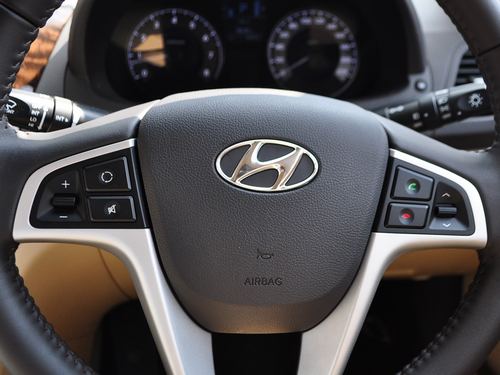 6 speed manual gearbox   Gearshift recommendation tool in action. Clearly tuned to maximise fuel efficiency. The MID suggests, in real time, the gear you should shift up / down to:  Typical OEM sounding head unit. Weak bass:  The entire dashboard is like one huge anti-skid mat. Feels nice to the touch too:  Both the Sun Visors have mirrors, with the driver’s side getting a slider & ticket holder. No lights in either:  Slim door pockets. Max 500 ml bottles in here:  Driver arm rest is useful over long drives. Does not foul with gearshifts in the way that the Vento's unit does:  Generous helping of chrome...  ...And faux wood too  A look at the 4-speed AT with tiptronic (+ / -) function:  Rear door opens really wide for easy ingress / egress:  Look how low the rear seat is placed. Rear legroom is decent, though under-thigh support is lacking:  That's my 5' 10" tall co-driver with the driver seat pushed all the way back:  Armrest for rear passengers. Odd items can be placed inside the integrated storage compartment:  Rear seat is wide enough for 3. Transmission hump on the floor isn't a bother either:  Boot space is sufficient for 4 L-size luggage items, and 2 soft bags on top: 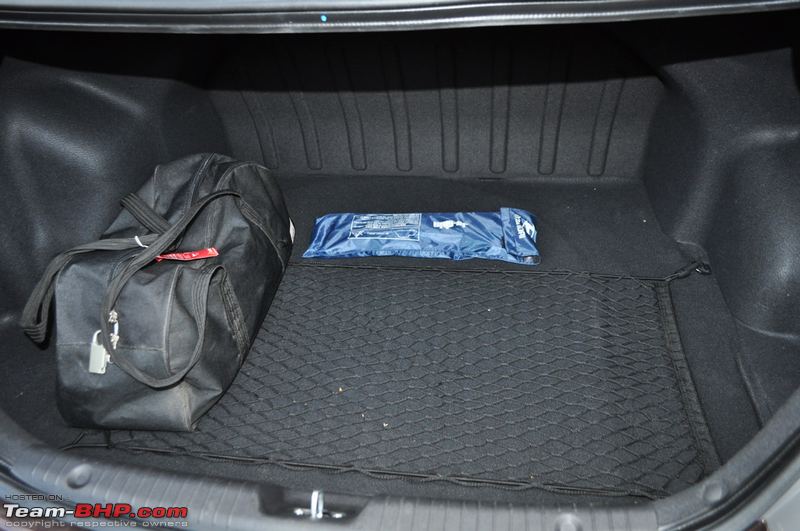 Last edited by Zappo : 28th April 2011 at 16:34. |
| |  (24)
Thanks (24)
Thanks
 |
| The following 24 BHPians Thank Zappo for this useful post: | abhilash_iv, akhil_007, amitby, Augustine Pius, AutoIndian, BoneCollector, caprico4, ExtremeTorque, guyfrmblr, jessie007, Latheesh, low_bass_makker, manson, Max, mezereo, nairrk, ph03n!x, pjbiju, S2!!!, Safari_Beast, samabhi, somjith_nair, Voodooblaster, xPK |
| | #4 |
| Team-BHP Support  Join Date: Oct 2005 Location: Hyderabad
Posts: 5,919
Thanked: 2,652 Times
| Safety features, Engine, Performance and Braking Safety Features:  Hyundai has loaded the new Verna with quite a level of safety kit. In a segment first, the Verna's top-end variant is equipped with 6 airbags! The braking is supported by an ABS + EBD system. Hyundai has also reverted back to a 4 disc brake set-up. It may be recalled that Hyundai surreptitiously removed rear disc brakes from the outgoing Verna, and replaced them with drums. This was a pure cost cutting move that drew flak from all quarters. The new Verna has addressed that legitimate grouse. The wheels themselves are 16”, and on first look, the discs also appear to be bigger than what is normally seen in C segment sedans. The doors lock on their own once the car starts moving and similarly, on a collision, the doors unlock on their own. To help while reversing the car, there are parking sensors as well as a camera on the boot lid (under the chrome strip). The (inner) rear view mirror doubles up as a display for the reverse camera. The reverse assist system also shows you a rectangular area divided into green, amber and red zones, superimposed on the rear view being projected by the camera. Engine, Performance and Braking: As long as the smart key is in your pocket, all you need to do is press the clutch and hit the start button: 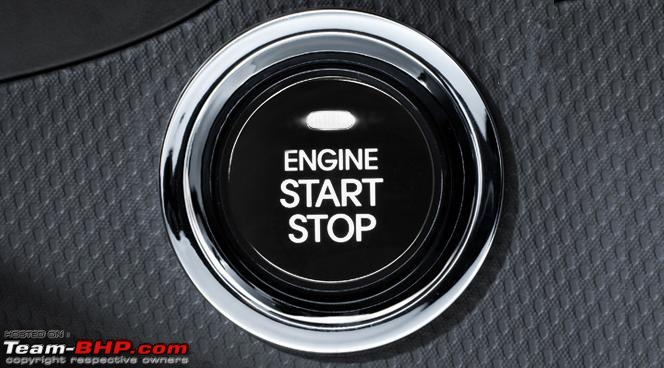 The MID reminds me: 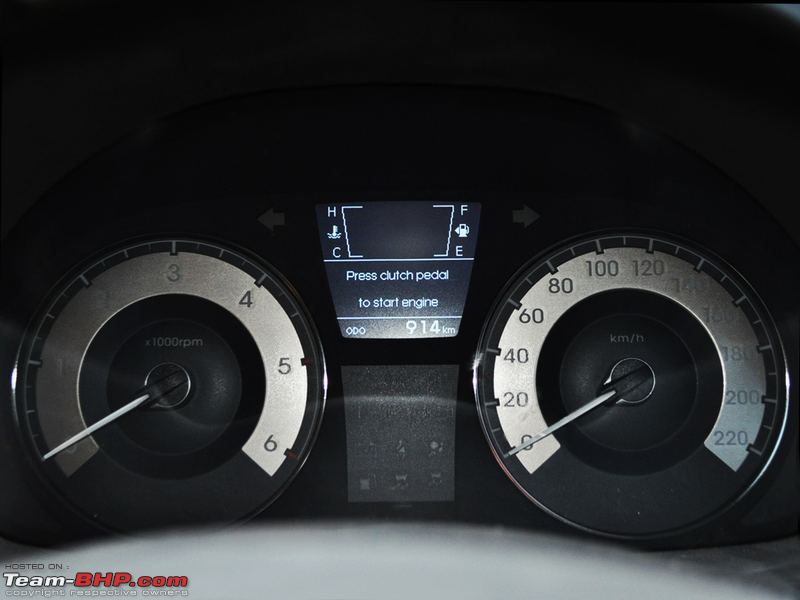 The Verna will now be offered with a choice of 4 engines; a petrol & diesel option in each, the 1.4L and 1.6L capacities. Further, the 1.6L engines (petrol or diesel) will give you the option of an automatic transmission. Even the gearboxes on offer are very different. The petrol Vernas, both 1.4 and 1.6, get a 5 speed manual gearbox, whereas the 1.6 petrol Verna also gets the auto tranny as an option. However, the auto tranny is only a 4-speed box which is a sacrilege in a car of this segment. The diesel Verna, both 1.4 and 1.6 VGT, get a 6-speed manual box! The 1.6 diesel also gets the auto treatment (again, the 4-speed box) as an option. A quick glance at the vital statistics of these engines as provided below:  The 1.6 Diesel + Manual Transmission  Anyone who has driven the previous generation Verna will tell you that the diesel is the more impressive. That continues with the new Verna as well. The 1.6 diesel MT is the star of the lot. This is a VGT engine (only the 1.6 comes with VGT, and not the 1.4 diesel) with swirl control valves and hydraulic lash adjusters. Switch on the engine and, after the initial warm up, she settles into a nice thrum (as opposed to the clatter of a typical diesel). Inside the cabin, the Verna is on the silent side. At times, it's difficult to tell that the car has an oil burner sitting under the hood. The engine has noticeable turbo lag upto 1,800 rpm, after which you see progress. But it's over 2,000 rpm that the motor really comes onto its own. Acceleration is fast thereafter, thanks to the 260 Nm of peak torque (@ 1900 rpm). Over 2k rpm, the motor is more linear than the outgoing Verna which had a sudden whoosh in turbo mode. The mid-range is punchy, and overtaking is not a problem at all. It'll sail through most maneuvers easily. However, the gearing is on the taller side. Thus, expect to downshift if you are at an rpm too low for the turbo to be spooling enough. On the open road, you can work your way around the lag. And even at 140 kph, the diesel isn't running out of breath at all. The additional gear ratio greatly helps for comfortable cruising. In 6th gear, the Verna does 100 kph at just about 2,000 rpm. The engine feels relaxed and is in complete "cruise mode". Expect highway fuel efficiency to be tall. The lag is more obvious in the city and takes getting used to. Like most other diesels, the action is between 2,000 – 4,000 rpm. In bumper to bumper traffic, you will need to work the gearbox. Within the city, the Vento diesel has a distinct advantage in terms of driveability, due to its inexistent lag. The clutch is not too hard, nor too light on the diesel. You could say it's par for the course. The gears slot in place without much fuss, and the throws aren't long either. It's a good gearbox and slick enough, though not the segment benchmark. The 1.6 Petrol + Automatic Transmission  I didn't get a chance to test the 1.6L petrol with the manual transmission. It's unfortunate that Hyundai has chosen to equip the new Verna with a 4 speed AT, especially as a manufacturer who has traditionally been AT-friendly & offered the transmission option in so many cars (Santro, i10, i20 etc.). The 4 speed AT is not as much of a problem in the city, as it's on the highway where the lack of a 5th ratio dulls performance. Those who use the petrol Verna AT within the city will find no reason for complaint. The shift quality is smooth enough, and the Verna can become an effortless city commuter. Note that the AT is suited to a demure driving style. There is a distinct lag when moving from 0 kph too. The gearbox offers relaxed cruising, without any jerks at all. I didn't find it "hunting" for gears either. AT buyers choose an automatic transmission primarily for urban commutes, and the Verna doesn't disappoint there. On the open road, however, it's a different story. The lack of a 5th ratio seems to make the engine work harder, especially in 3rd & 4th gears. The AT box is slow to respond in kick-down mode as well; I found myself using manual override (tiptronic) whenever I wanted a downshift. This is definitely not the transmission for an enthusiastic driving style. Not by a mile. The Honda City - with its 5 well matched gear ratios - is the undisputed superior for highway drives. And no, the Verna doesn't get steering-mounted paddle shifts either. The petrol engine itself is very refined at normal speeds; within the city, you can hardly hear it. At high rpms though, it does develop a coarse edge near the redline. Considering its power output and the Verna petrol's power / weight ratio, the petrol should be quick with the manual gearbox. The suspension is softly-tuned by Hyundai engineers. Hence, ride quality is excellent within the city. Even potholes are dismissed off without complaint. On rough urban roads where the Honda City would fumble, the Hyundai Verna breezes through. The soft suspension raises its ugly head at high speeds though, both in ride as well as handling. Dynamically, the Verna is just like most other C segment sedans upto 130 kph. Over that limit, you get the feeling that you are floating. One does not feel very confident to go beyond, as even a small undulation on the road surface causes the new Verna to pitch and roll. Every time I reached 120 - 140, it rocked like a boat at the smallest of unevenness on the road. The twitchy behaviour at high speed is not confidence inspiring & the ride doesn't stay flat either. At this point, the diesel engine wants to go further, but the handling remains a limitation. The diesel Verna felt a little better at high speeds; it's probably the additional weight of the engine at play here. As mentioned earlier, Hyundai has reverted back to the 4 discs arrangement with ABS & EBD. No problems with the brakes on a straight road, the car stops without a fuss. However, it is on the twisties that the Verna gets nervous; brake real hard and the tail shows a tendency to step out of line. Last edited by Zappo : 28th April 2011 at 16:34. |
| |  (28)
Thanks (28)
Thanks
 |
| The following 28 BHPians Thank Zappo for this useful post: | ajaynaphade, amitby, Apple, aravindwarrier, AutoIndian, Bhushanrulz, BlackPearl, caprico4, DONZ, ExtremeTorque, h@r$h@l, harjeev, J.Ravi, jkumar007, kapilvgupta, manson, Max, mezereo, nairrk, ph03n!x, razor4077, Safari_Beast, samabhi, sherahrk, somjith_nair, SR-71, xPK, _raVan_ |
| | #5 |
| Team-BHP Support  Join Date: Oct 2005 Location: Hyderabad
Posts: 5,919
Thanked: 2,652 Times
| Some Other Points Other Points:
Last edited by Zappo : 28th April 2011 at 16:34. |
| |  (13)
Thanks (13)
Thanks
 |
| The following 13 BHPians Thank Zappo for this useful post: | adityadeva, Apple, DONZ, ExtremeTorque, guyfrmblr, headers, manson, Max, Safari_Beast, samabhi, somjith_nair, Voodooblaster, xPK |
| | #6 |
| Team-BHP Support  Join Date: Oct 2005 Location: Hyderabad
Posts: 5,919
Thanked: 2,652 Times
| Chief Competitors Chief Competitors of the Hyundai Verna Honda City: 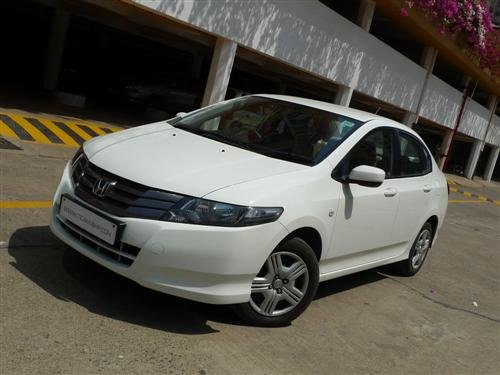 Owners liked: - Modern styling and design - Outright engine performance - Spacious well-designed interiors - Excellent ride quality - Honda reliability & durability Owners disliked: - Cheap interior part quality - Sparse equipment list - Lacks the quality of outgoing generation - Below average customer support VW Vento 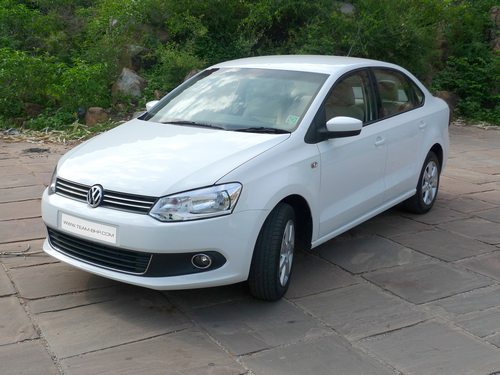 Owners liked: - Well-built, robust, European sedan - Clean and contemporary styling. - Competitive pricing, especially for a German car - Stunning diesel engine. - Mature suspension setup. Balanced ride & handling - Segment firsts : Reach adjust steering, gear recommender, adjustable driver armrest etc. - All-rounded nature; Jack of all trades Owners disliked: - 6.99L Trendline (entry) variant is simply too basic. No Comfortline (middle) variant - Petrol engine isn't as impressive as the diesel. Average low rpm response - Electric power steering. The Vento deserves a pure hydraulic unit - Some goodies missing (steering-mounted audio controls, AUX / USB stereo, dead pedal & folding rear seat) - Thin 47 dealer all-India network. - VW's long-term ownership costs are unknown Maruti SX4: 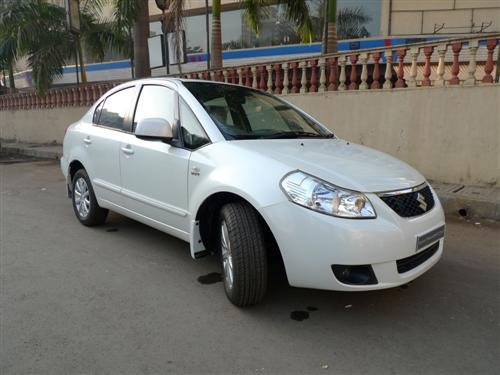 Owners liked: - Value-driven pricing - Solid build quality - Quick petrol engine - Safety features on offer - Spacious and well-spec'ed interiors - Fantastic Maruti service Owners disliked: - Stiff ride quality at low speeds - Lack of overall quality - Sub-par fit and finish for the price - Low engine refinement levels - Rear seat center-hump Fiat Linea: 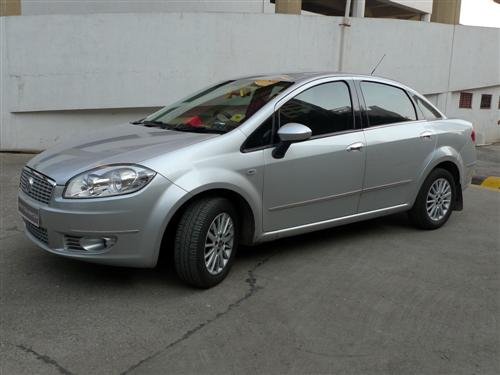 Owners liked: - Elegant styling - Solid build quality - Fuel-efficient diesel - Brilliant handling & dynamics - Mature ride quality - Top level of equipment Owners disliked: - Compact rear seat confines - Lack of outright performance (either engine) - Interior fit, finish and quality are below average - Shoddy after-sales support - Niggling issues NOTE : Competitor information sourced from the Team-BHP Ownership Review Section (except Vento, which is from GTO's review). Last edited by Zappo : 28th April 2011 at 16:34. |
| |  (42)
Thanks (42)
Thanks
 |
| The following 42 BHPians Thank Zappo for this useful post: | 999, Abeer, abhinav.gupta88, AjiGTI, amit1234singla, anilisanil, anonymous, AutoIndian, bhp_maniac, blackasta, deadguy25, diffsoft, download2live, DRIV3R, Elan, guyfrmblr, headers, jkumar007, kadanaJ, LobsterB, lsp, madbullram, mandheers, Max, mezereo, Motoringlover, mtnrajdeep, nairrk, Off Roadie, pinnacle, rmk, samabhi, smashnerd, somjith_nair, specialist1968, spiritual, supertinu, Technocrat, vignesh_ny, Voodooblaster, Zam_R, _raVan_ |
| | #7 |
| BHPian Join Date: Apr 2011 Location: Bangalore
Posts: 97
Thanked: 41 Times
| re: Review: 2nd-gen Hyundai Verna (2011) Great stuff Zappo!! Bravo! this is before i even read your entire review. Just amazing to see a detailed from the moderator before the launch of the car. |
| |  (2)
Thanks (2)
Thanks
 |
| The following 2 BHPians Thank kumarsiddhi for this useful post: | heavy_foot, xPK |
| | #8 |
| Senior - BHPian Join Date: Dec 2007 Location: CNN/BLR
Posts: 4,241
Thanked: 10,070 Times
| re: Review: 2nd-gen Hyundai Verna (2011) Great review, after reading so many conflicting reviews I was eagerly waiting for TBHP one. My friend's family is planning to buy a sedan and I suggested new Verna. But looking at the rear leg room and underthigh support i do not think it is good option for them as my friend's parents/in-laws will find it difficult. Is it really a deal breaker? Will take final decision after the test drive. Kudos to Hyundai team for bringing such a wonderful product to India. Vento, SX4 and upcoming New Fiesta, tough time ahead for H-City for sure! Last edited by Latheesh : 28th April 2011 at 17:03. |
| |  ()
Thanks ()
Thanks
 |
| | #9 |
| Senior - BHPian | re: Review: 2nd-gen Hyundai Verna (2011) Atlast here it comes. You guys made us wait for a really long time, but it seems its well worth the wait and much more. As of now, this is the most complete review of the all-new Verna/Accent I have ever read. And thats including the reviews in international publications. Bravo! Great work, and a great car to top it up! I am very sure the all-new Verna is going to set the sales charts on fire. |
| |  ()
Thanks ()
Thanks
 |
| | #10 |
| BHPian Join Date: May 2010 Location: God'sowncountry
Posts: 119
Thanked: 34 Times
| re: Review: 2nd-gen Hyundai Verna (2011) Great review. Thank you for the fantastic effort. Felt as if I was taking a Test Drive. |
| |  ()
Thanks ()
Thanks
 |
| | #11 |
| Senior - BHPian Join Date: Jul 2009 Location: Hyderabad
Posts: 1,666
Thanked: 340 Times
| re: Review: 2nd-gen Hyundai Verna (2011) Amazing review zappo. I liked everything about the new Verna. Heck it's even more good looking and bang for the buck when compared to the new Fiesta that is coming. But then as you said, it floats at 130kmph and above, disappoints me. Even my Ikon is stable at 140kmph. No official info on the pricing yet ? The best thing is that Hyundai is offering lots of engine and trim options, that would keep a lot of customers happy. But then just a city car image will not do it any good. EDIT : One question. Why doesn't the petrol engines get 6 speed MT? Last edited by Fordmanchau : 28th April 2011 at 17:09. |
| |  ()
Thanks ()
Thanks
 |
| |
| | #12 |
| Distinguished - BHPian  Join Date: Jan 2010 Location: TVPM
Posts: 3,818
Thanked: 11,707 Times
| re: Review: 2nd-gen Hyundai Verna (2011) Didn't expect the little fit and finish problem,but these are not big problems. Rather it won't be a surprise if this turns out to be the biggest seller in the C segment. The Vento though a better handler and quality would find it hard to match the features offered and most importantly the A.S.S of Hyundai won't be matched in the near future by VW,whose long term maintenance will also be suspect. |
| |  ()
Thanks ()
Thanks
 |
| | #13 |
| BHPian | re: Review: 2nd-gen Hyundai Verna (2011) Excellent review. Awaiting the price declaration The 6-speed gear box is really a treat. I should have waited  |
| |  ()
Thanks ()
Thanks
 |
| | #14 |
| Senior - BHPian Join Date: Feb 2010 Location: -
Posts: 1,147
Thanked: 1,144 Times
| re: Review: 2nd-gen Hyundai Verna (2011) This Verna looks good and is a worthy successor. Wonder why they had to launch that hideous Verna transform. But no back-lit switches on passenger door? And rear doors with no pockets? Over all "Me Like" the car. Hey one thing, did the steering rattle? One more thing. What is that "facebook" like tag doing on top of the review? Another new feature or I just missed it all this time? Last edited by download2live : 28th April 2011 at 17:15. |
| |  (1)
Thanks (1)
Thanks
 |
| The following BHPian Thanks download2live for this useful post: | pinnacle |
| | #15 |
| BHPian | re: Review: 2nd-gen Hyundai Verna (2011) Excellent Review Zappo. Enjoyed reading it. Any thoughts on how it handles pot holes ? (Refering to GC related aspects of the car) . Appreciate your thoughts on the same. |
| |  ()
Thanks ()
Thanks
 |
 |

